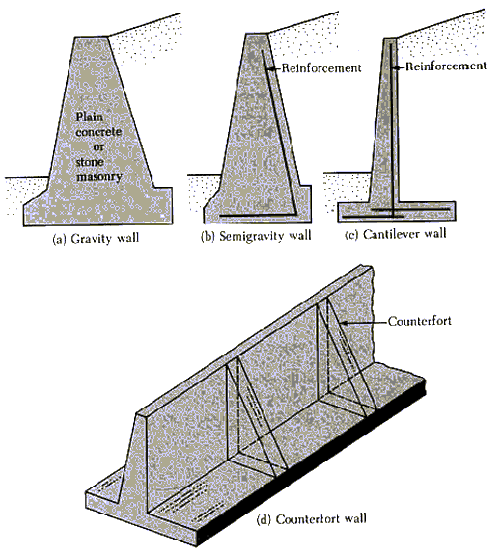WARNING : This article is an example of realisation, NOT a training. Building a retaining wall is a loud project, not to be airily taken. You shall document yourself and consult professionnal craftsmans. In case of doubt, avoid building this work your-self. You are responsible of your acts and I reject any responsabilities about the use of this article.
Now this is said, let’s start...
My retaining wall has been build with 27cm width special blocks, kind of empty concrete block which are posed ones over the others without mortar then filled with concrete. Once a line of block is made, one or two steel tors are put. When all lines are done, steel tors are put in the vertical cavities.
The wall is 36m long and 1,60 high. Its curve profile gives a better resistance to ground weight. It is self-stable.
the foundation slab is one of the most important topic. It shall be large and robust. My slab is 1m large and 40cm thickness.
Steel reinforcement is also a crucial point. The slab a consequent reinforcement. The slab shall be united with the wall. Before molding, a lot of vertical waiting tors shall be placed. Then when the slab is mold, the blocks are placed other the tors.
The wall has a vertical L profile. See figures c) and d) below (source www.concretenetwork.com). The feet of the L shall be toward the ground side thus the ground acts as a counterbalance.

I have build some counterforts as shown in figure d) every 4m.
The concrete of the slab has been provided by a concrete truck. The blocks have been filled with hand-made concrete. this is a job of beast. It shall be preferable to filled with a concrete pump although it is more expensive. But one should know that only 5 to 6 lines can be filled at a time because over there’s a risk of block explosion due to concrete pressure. So depending on the wall heigh, there are several filling steps and the successive concrete pump hiringq will grow up the bill. My option to do it manuallaly is not a so bad solution, economycally speaking.
Drain shall be done carrefully. A farming drain has been placed over the slab. The drain is covered with 30cm of gravels. I have placed a geotextile over the gravels to avoid obstruction by small particules.
Some weepholes, empty tubes crossing though the wall, shall be placed every 5m. Weepholes avoid accumulation of water behind the wall. One should knows that this accumalation is responsible of a lot of wall falls down.
To improve draining, I have placed some hourdies vertically. 
Small incident during work: The excavator had digged the slab trench. Then we have spent a lot of time preparing the steel reinforcement before molding the concrete. But this summer we had a big thunderstorm which provoked soem ground falls into the trench, covering over the reinforcement with more than 20cm of mud. We had to clean up and it was really difficult ; mud is like glue on the steel. Conclusion: building a retaining wall shall be performed quickly.
The wall cost around 3000 euros of materials in 2001.



